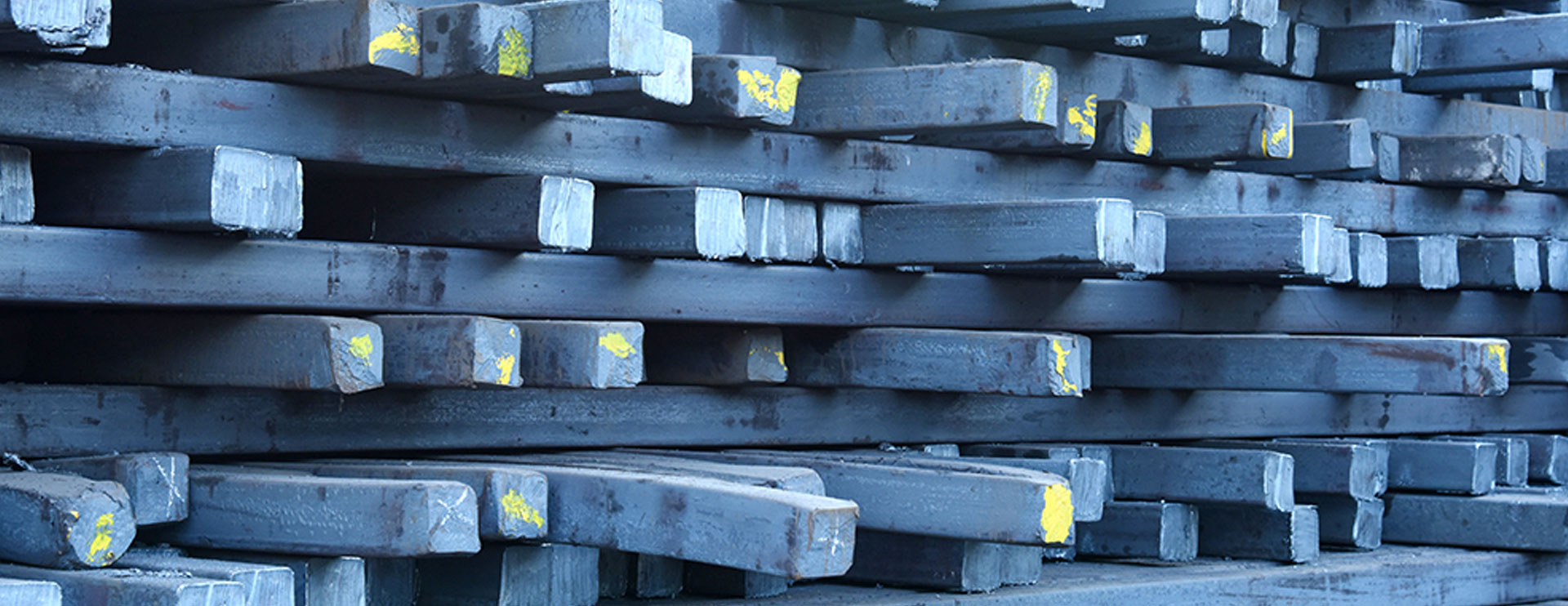
-
Billets
Continuous casting, is the process in which molten steel is solidified into a billet. Continuous casting is a energy-saving technique to cast the molten steel to a section shape or a certain size billet continuously and continuous casting machine (CCM) is the equipment to complete this process.
Molten metal is tapped into the ladle from furnaces. After undergoing any ladle treatments, such as alloying and degassing, and arriving at the correct temperature, the ladle is transported to the top of the casting machine.

-
EAF - Induction Furnace
Sponge iron, ferro alloys and other ingredients are changed into electric arc furnace with lime in the required ratio for the targeted grade. For melting, electrical energy is used through three graphite electrodes. The carbon injected inside the furnace reacts with oxygen producing CO, which bubbles through the bath creating a foamy slag.
The excess CO reacts with oxygen, converting the CO2, again generating heat. In the arc furnace, the charged material melts at about 1800C. When the metal comes out in the liquid form, proper refining is done, reducing impurities of steel such as sulphur and phosphorous. Samples are drawn from the liquid metal to ensure the proper chemical properties required are present. At the end of the refining stage, the temperature is measured and slag is removed from the furnace. After reaching a required temperature and chemical composition, the final tapping is done for the concast plant.
Continuous casting is the process in which molten steel is solidified into a billet. Continuous casting is an energy-saving technique to cast the molten steel to a section shape or a certain size billet continuously and continuous casting machine (CCM) is the equipment to complete this process.
Molten metal is tapped into the ladle from furnaces. After undergoing any ladle treatments, such as alloying and degassing, and arriving at the correct temperature, the ladle is transported to the top of the casting machine.
Production Process using EAF:
Raw materials are charged into electric arc furnace with lime in the required ratio for the desired grade. For melting, electrical energy is used through three graphite electrodes. The carbon injected inside the furnace reacts with oxygen producing CO, which bubbles through the bath creating a foamy slag.
In the arc furnace, the charged material melts at about 1800C. When the metal comes out in the liquid form, proper refining is done, reducing impurities of steel such as Sulphur and phosphorous. Samples are drawn from the liquid metal to ensure the proper chemical properties required are present. At the end of the refining stage, the temperature is measured and slag is removed from the furnace. After reaching a required temperature and chemical composition, the final tapping is done for the concast plant.

From the ladle, the hot metal is transferred via a refractory shroud to a holding vessel a tundish. The tundish allows a reservoir of metal to feed the casting machine while ladles are switched, thus acting as a buffer of hot metal, as well as smoothing out flow, regulating metal feed to the molds and cleaning the metal. The mold is water-cooled to solidify the hot metal directly in contact with it. This is the primary cooling process.
The specifications are:
| Sulphur | @0.045% Below |
| Phos | 0.045% Below |
| Carbon | 0.25% Below |
| Mn | 0.50% Above |
| Silicon | 0.18% Above |
Billets of 100x100 to 130x130 mm as per IS 2830





